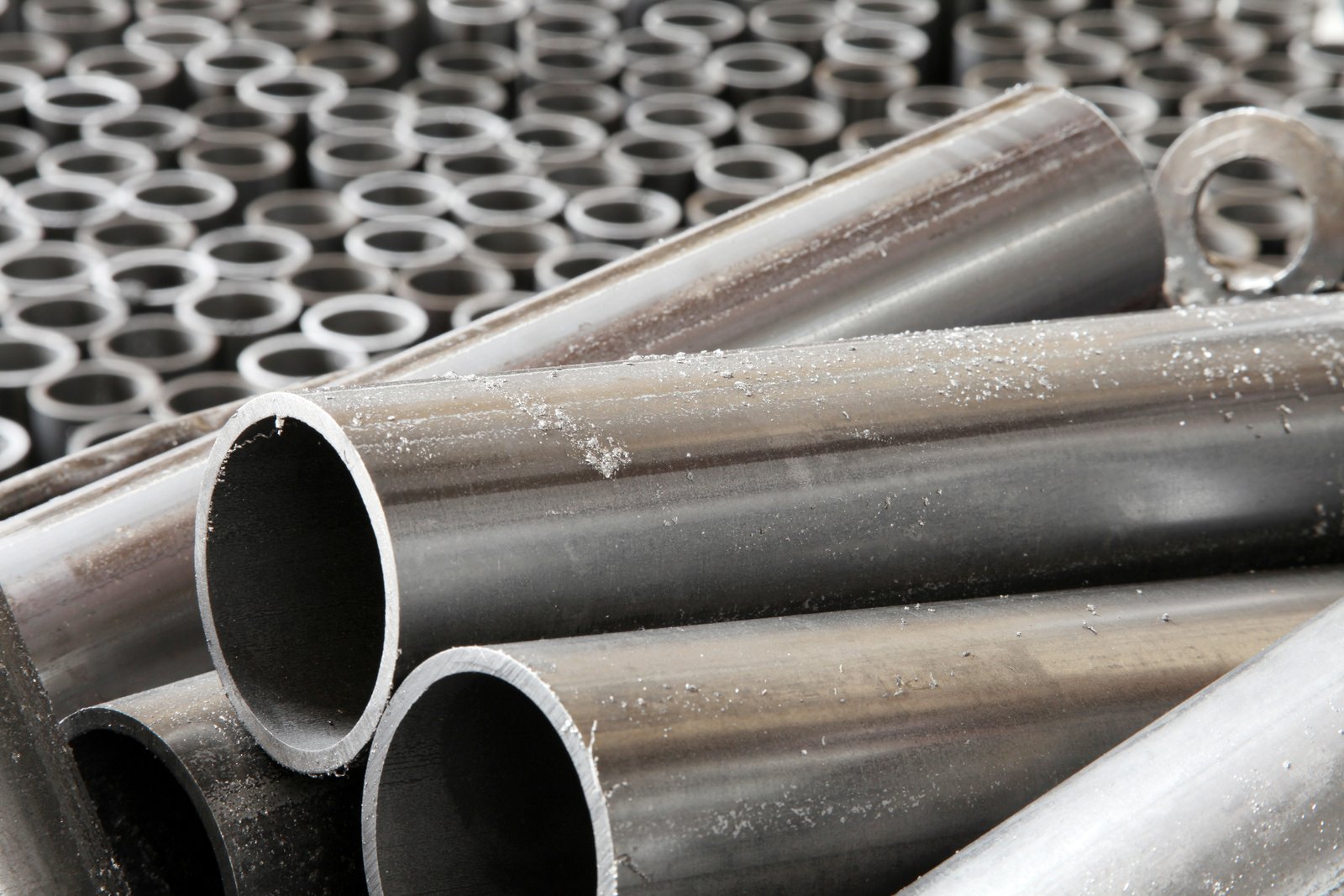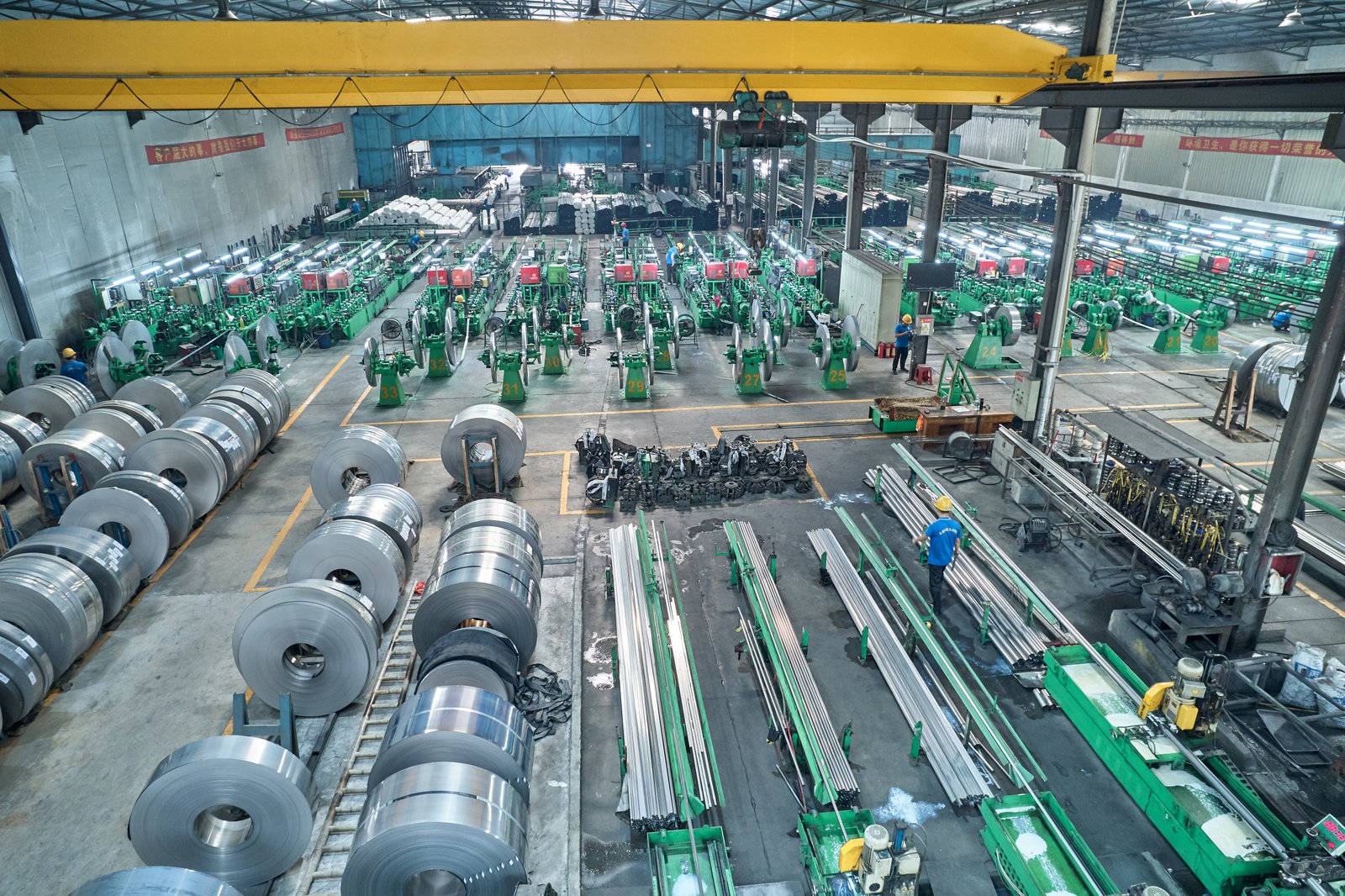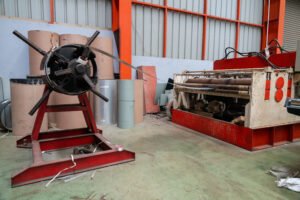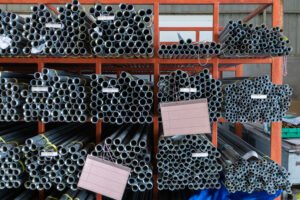Non-Destructive Testing Methods: A Guide to PMI, Eddy Current, and Ultrasonic Testing

Are you concerned that undetected material flaws could compromise your project's integrity and safety? A single incorrectly graded pipe or a microscopic crack can escalate into catastrophic failures, leading to costly rework, operational downtime, and significant damage to your professional reputation. Non-destructive testing (NDT) offers the perfect solution, allowing you to verify material integrity and detect defects without causing any damage.
Non-destructive testing (NDT) encompasses a group of analysis techniques used to evaluate the properties of a material, component, or system without causing damage. Methods like PMI, Eddy Current, and Ultrasonic testing are crucial for ensuring quality, safety, and reliability in countless industrial applications.
In my role as Global Business Director at MFY, I’ve seen countless scenarios where the right NDT method has saved a project. It’s about more than just ticking a quality control box; it's about building a foundation of certainty. This proactive approach to quality assurance is what separates successful projects from those that face unexpected and costly challenges down the line.
This guide moves beyond simple definitions. We will delve into the practical applications and critical differences between three cornerstone NDT methods: Positive Material Identification (PMI)1, Eddy Current Testing (ECT), and Ultrasonic Testing (UT). Drawing from real-world industry cases, including data from leading NDT associations, we will critically analyze how each method functions. My goal is to equip you with the knowledge to not just understand these technologies, but to strategically apply them to build a more resilient and reliable supply chain for your operations.
What are the key principles of Positive Material Identification (PMI)?
Ever received a shipment of stainless steel, only to be plagued by doubt about its authenticity? Using the wrong alloy isn't just a minor error; it's a critical risk that could jeopardize the structural integrity and safety of your entire operation. This uncertainty can lead to catastrophic failures, regulatory penalties, and a tarnished reputation. Positive Material Identification (PMI) provides an immediate, on-site solution to confirm the elemental composition of your materials, ensuring they meet the precise specifications required.
Positive Material Identification (PMI) functions by analyzing a material's elemental makeup to verify its alloy grade. It most commonly uses X-ray fluorescence (XRF) or optical emission spectrometry (OES) to excite atoms and measure their unique energy signatures, providing rapid, non-destructive alloy verification.
Knowing the principles of PMI is essential, but its true value is demonstrated in the field. I often share the story of a client, a major engineering contractor in Southeast Asia tasked with constructing a critical desalination plant. For this application, the chloride-rich environment demands the superior corrosion resistance of stainless steel grade 316L. A substitution with a visually identical but lower-grade material like 304 would inevitably lead to premature failure and staggering financial loss. Although their shipment came with the proper certifications, a diligent project manager decided to perform on-site PMI as a final check. This decision highlights a crucial point: PMI is not merely a box-checking exercise. It is a fundamental pillar of modern quality assurance, empowering teams to build with confidence and guarantee the long-term performance of their assets. Delving into the technologies that make this possible reveals distinct advantages and limitations that directly impact which method is right for your specific application.

The Science of X-ray Fluorescence (XRF) in Practice
X-ray Fluorescence, or XRF, is the most common form of PMI, widely adopted for its portability and speed. The technology is housed in a handheld device, often resembling a large power tool, that can be easily carried onto a construction site, into a warehouse, or along a production line. When the operator pulls the trigger, the device emits a primary beam of X-rays that strikes the surface of the metal being tested. This energy beam excites the electrons within the material's atoms, causing them to be momentarily ejected from their atomic orbit. As the atom stabilizes, an electron from a higher energy orbit falls into the vacant spot, releasing a secondary X-ray in the process. This secondary X-ray is the "fluorescence" in the name, and its energy level is a unique signature of the element from which it was emitted. The analyzer's detector captures these secondary X-rays, sorts them by energy, and instantly calculates the percentage of each element present in the alloy, displaying the result on a screen.
The desalination plant project I mentioned earlier provides a perfect case study. The contractor used a handheld XRF analyzer to test pipes from two different suppliers, both certified as 316L. The pipes supplied by MFY consistently showed a Molybdenum content between 2.0% and 3.0%, which is the key element that gives 316L its enhanced resistance to chlorides. However, when they tested the material from the second supplier, the results were alarming. Several pipes showed Molybdenum levels below 0.5%, meaning they were effectively Grade 304. The XRF test, which took only seconds per pipe, prevented a potential multi-million dollar failure and saved the project's timeline and reputation.
While incredibly useful, it's crucial to understand the limitations of XRF technology. According to data published in the Journal of Nondestructive Evaluation, while portable XRF analyzers can achieve high accuracy for most common alloying elements, they are notoriously poor at detecting very light elements. Specifically, they cannot reliably measure carbon content. This is a critical deficiency when you need to distinguish between standard stainless steel grades and their low-carbon ("L") variants, such as 304 vs. 304L or 316 vs. 316L. The "L" grades are specified for welded applications to prevent sensitization and subsequent intergranular corrosion, making carbon detection a safety-critical requirement in many industries.
Optical Emission Spectrometry (OES): When Precision is Paramount
When the precise measurement of light elements like carbon, phosphorus, or sulfur is non-negotiable, Optical Emission Spectrometry (OES) is the required method. Unlike the gentle excitation of XRF, OES uses a more energetic approach. The instrument's probe is placed against the metal surface, and a high-voltage electrical spark is discharged between an electrode and the sample. This spark instantly heats, vaporizes, and excites a minuscule amount of the material, creating a high-temperature plasma. As the atoms within this plasma return to their ground state, they emit light at characteristic wavelengths—a unique optical fingerprint for each element. This light travels through an optical fiber back to the spectrometer, where it is diffracted and measured, allowing for a highly accurate and quantitative analysis of the material's full chemical composition.
This level of precision is essential for many of our clients at MFY, especially those manufacturing equipment for the oil and gas industry in the Middle East. For them, a certificate of analysis backed by OES data is a mandatory requirement. For instance, in manufacturing high-pressure vessels, using Grade 316 instead of 316L could be catastrophic. During welding, the higher carbon content in standard 316 can lead to chromium carbide precipitation at the grain boundaries, depleting the chromium needed for corrosion protection and making the weld zone susceptible to failure. Our in-house OES systems guarantee that the carbon content of our 316L pipes is below the 0.03% maximum, providing our clients with the documented assurance they need for such a critical application.
The primary trade-off with OES is that it is considered minimally destructive. The electric spark leaves a small, visible burn mark or crater on the material's surface. While this is acceptable for raw materials or components that will be further processed or coated, it is often unacceptable for finished, polished, or coated products. Furthermore, while mobile OES analyzers exist (typically on a cart), they are not as portable or convenient as handheld XRF devices. This makes OES better suited for a controlled environment like a fabrication shop or a laboratory rather than for rapid spot-checks across a sprawling project site.
The Strategic Role of PMI in Supply Chain Management
Ultimately, Positive Material Identification should be viewed not just as a quality control test, but as a cornerstone of a comprehensive supply chain risk management strategy. By systematically integrating PMI at critical junctures—such as inspecting incoming raw materials, verifying components mid-production, and conducting final quality assurance on outgoing goods—companies can create a formidable defense against the costly and dangerous consequences of material non-conformance. This proactive philosophy is embedded in industry standards like the American Petroleum Institute's API RP 578, which provides guidance on creating a material verification program for new and existing assets to prevent potential catastrophic events.
The two primary PMI methods serve different, yet complementary, roles within this strategy. A company can leverage the strengths of both to create a highly effective quality program.
| Feature | Handheld XRF | Mobile/Lab OES |
|---|---|---|
| Principle | X-ray Fluorescence | Spark-induced Optical Emission |
| Portability | High (Handheld) | Low to Medium (Cart-based) |
| Analysis Time | Seconds | 1-2 minutes |
| Destructive? | No | Minimally (leaves a burn mark) |
| Light Element (C, S, P) Detection | No / Very Limited | Yes, highly accurate |
| Ideal Use Case | Rapid alloy sorting, on-site verification | Precise grade certification, lab analysis |
From our vantage point at MFY, our mission extends beyond simply supplying high-quality stainless steel. We see it as our responsibility to help our partners, whether they are equipment integrators in Russia or distributors in India, build stronger and more reliable supply chains. Encouraging and educating our clients on the proper use of PMI is a key part of this. When a client performs their own verification on our products, it fosters a level of transparency and trust that transforms the relationship from a simple transaction into a true partnership. This shared commitment to quality is what ultimately strengthens the entire value chain, from our production mill to the final end-user application.
XRF detects MolybdenumTrue
XRF analyzers can accurately measure Molybdenum content, which is crucial for identifying 316L stainless steel.
OES leaves no marksFalse
OES testing creates a small burn mark on the material surface, making it minimally destructive.
How does Eddy Current Testing work in non-destructive testing?
Concerned about surface or near-surface defects like cracks and corrosion in your conductive materials? These flaws can compromise structural integrity and lead to premature failure, but are often invisible to the naked eye. Relying on visual inspection alone is a gamble that can result in unexpected breakdowns and safety hazards. Eddy Current Testing (ECT) offers a fast, reliable, and non-contact method to detect these hidden dangers before they become critical problems.
Eddy Current Testing (ECT) works on the principles of electromagnetism. A probe with a coil carrying an alternating current is placed near a conductive part, inducing circular electrical currents (eddy currents) within it. Flaws like cracks disrupt these currents, which is detected by the probe.
The science of electromagnetic induction is fascinating, but the real power of Eddy Current Testing comes to life in its practical application, particularly in industries where the integrity of tubing is paramount. At MFY, we manufacture vast quantities of stainless steel tubes for clients in sectors like power generation and chemical processing. One of our long-term partners, an equipment integrator who builds industrial heat exchangers, relies exclusively on ECT to inspect the thin-walled tubes that are the heart of their products. For them, a single microscopic crack or corrosion pit could cause a leak, leading to cross-contamination of fluids, costly shutdowns, and potential environmental hazards. Their stringent quality protocol, which mandates 100% ECT inspection of all incoming tubes, is a testament to the method's effectiveness. This real-world reliance demonstrates that ECT is more than a quality check; it is an essential process control tool that ensures product reliability and operational safety from the very first stage of manufacturing.

The Principle of Electromagnetic Induction
Eddy Current Testing is a powerful NDT method that is exclusively used on conductive materials. Its operation is entirely based on the laws of electromagnetic induction2, a principle discovered by Michael Faraday. The testing setup involves a probe containing one or more coils of conductive wire, which is connected to an ECT instrument. The instrument generates an alternating electrical current that flows through the coil. This alternating current, in turn, creates an oscillating magnetic field in and around the coil. When the probe is brought close to the surface of a conductive material, such as a stainless steel tube or an aluminum plate, this oscillating magnetic field penetrates the material and induces small, circular flows of electrons known as "eddy currents." These eddy currents flow parallel to the surface and generate their own opposing magnetic field.
The core of the inspection lies in monitoring the delicate balance between the primary magnetic field from the probe and the secondary magnetic field from the eddy currents. The ECT instrument measures the impedance (the effective resistance in an AC circuit) of the coil in the probe. In a flawless, uniform material, the flow of eddy currents is smooth and predictable, resulting in a stable impedance reading. However, if there is a discontinuity in the material—such as a crack, pit, void, or even a change in conductivity or thickness—it will disrupt and distort the path of the eddy currents. This disruption alters the secondary magnetic field, which in turn causes a measurable change in the probe coil's impedance.
The instrument detects this change in impedance, signaling the presence of a defect. An experienced operator can interpret the characteristics of this signal—its phase and amplitude—to glean information about the type, size, and location of the flaw. This entire process happens almost instantaneously and without any physical contact being required between the probe and the test piece (though a consistent lift-off, or distance, is crucial for accuracy), making it an exceptionally fast method for inspecting large surface areas.
Practical Applications in Tube and Weld Inspection
One of the most widespread applications of ECT is the inspection of tubing in heat exchangers, steam generators, and condensers. In these applications, specialized probes are inserted into the tubes and pulled through at a constant speed. This allows for a rapid 100% inspection of the tube's internal and external surfaces for defects like cracking, pitting, and wall loss due to corrosion or erosion. For our heat exchanger client, this is a routine part of their incoming quality control. A study from the Electric Power Research Institute3 indicates that routine ECT inspection can increase the reliability of heat exchangers by over 75% by identifying degradation before it leads to a leak. We at MFY have integrated in-line ECT systems directly into our tube production lines, ensuring that the tubes we ship have already passed stringent quality checks.
Beyond tubing, ECT is also highly effective for inspecting welds for surface-breaking cracks, which can be a common issue. Specialized probes designed to follow the contour of a weld bead can quickly scan the weld cap and heat-affected zone. This is particularly valuable in industries like aerospace, where fatigue cracks in structural components must be detected at the earliest possible stage. Similarly, it's used to find surface cracks in automotive components, railway tracks, and other critical infrastructure.
The versatility of ECT is further enhanced by the development of eddy current array (ECA) technology. ECA probes use multiple coils arranged in a single probe assembly. Each coil can be electronically fired in specific sequences, creating a much wider inspection swath and generating a detailed C-scan image, or map, of the surface. This dramatically increases inspection speed and improves the probability of detection compared to single-coil probes, making it ideal for inspecting large surface areas on things like pressure vessels or aircraft fuselages. This technological advancement continues to expand the scope and efficiency of ECT across all manufacturing sectors.
Factors Influencing ECT Accuracy and Its Limitations
While powerful, ECT is not a one-size-fits-all solution, and its effectiveness is influenced by several key factors. The most significant limitation is its depth of penetration. The strength of eddy currents decreases exponentially with distance from the surface, a phenomenon known as the "skin effect." This means ECT is primarily a surface and near-surface inspection method. The standard depth of penetration is typically limited to a few millimeters (around 1-6 mm), and this depth is inversely proportional to the test frequency and the material's conductivity and magnetic permeability. Therefore, ECT cannot be used to find deeply embedded internal flaws.
The accuracy of the test is also highly dependent on the characteristics of the material itself. Ferromagnetic materials, like carbon steel, have high magnetic permeability, which creates strong and noisy background signals that can easily mask the subtle signals from actual defects. While specialized probes and techniques like magnetic saturation can be used to overcome this, ECT is generally more straightforward and sensitive on non-ferromagnetic materials like stainless steel, aluminum, and titanium. Furthermore, variations in material properties, such as conductivity changes due to heat treatment or alloy composition, can also affect the eddy current response and must be accounted for during calibration.
ly, like many NDT methods, proper calibration and operator skill are paramount. The instrument must be calibrated using a reference standard that is made of the same material and has the same geometry as the part being tested. This standard must contain well-characterized, artificial flaws (like drilled holes or machined notches) that are representative of the real defects one expects to find. The operator must be able to properly set up the equipment, scan the part correctly, and accurately interpret the signals to distinguish between relevant defect indications and irrelevant non-relevant indications caused by geometry or material variations.
| Parameter | Influence on ECT | Best Practice |
|---|---|---|
| Test Frequency | Higher frequency = less penetration, higher sensitivity to surface flaws. | Use high frequency for surface crack detection; lower frequency for deeper, subsurface flaws. |
| Material Conductivity | Changes in conductivity affect eddy current flow and signal response. | Calibrate on a reference standard with the same nominal conductivity as the test piece. |
| Magnetic Permeability | High permeability (ferromagnetic materials) creates strong, noisy signals. | Use on non-ferromagnetic materials (e.g., stainless steel, aluminum) for best results. |
| Probe-to-Part Spacing (Lift-off) | Inconsistent spacing causes significant signal variation. | Maintain a constant, minimal lift-off using fixtures or automated scanners. |
ECT works on electromagnetismTrue
Eddy Current Testing uses alternating current in a coil to induce eddy currents in conductive materials, detecting flaws through electromagnetic principles.
ECT detects deep internal flawsFalse
Due to the skin effect, ECT is limited to surface and near-surface inspection (typically 1-6mm depth) and cannot detect deeply embedded flaws.
What is the process of conducting Ultrasonic Testing?
Are you worried about deep internal defects like voids or cracks in your materials that could compromise their structural integrity? These hidden flaws are impossible to see and can lead to sudden, catastrophic failures under stress. Relying on surface inspection methods alone leaves you vulnerable. Ultrasonic Testing (UT) provides a solution by using sound energy to see deep inside a material, revealing a clear picture of its internal health.
Ultrasonic Testing (UT) involves transmitting high-frequency sound waves into a material using a transducer. These waves travel through the material and reflect off the back surface or any internal flaws. The time taken for the echoes to return reveals the defect's location and size.
The concept of using sound waves for detection is simple, but the precision of modern Ultrasonic Testing is remarkable. I often refer to a project with a client in the power generation sector who was constructing a high-pressure steam pipeline. The integrity of the circumferential welds was the single most critical factor for the plant's safety and operational license. Any internal flaw, such as lack of fusion or porosity, could become a stress concentration point and initiate a fracture under the line's immense pressure and temperature. For this client, UT was not just a quality check; it was a mandatory, code-required step for weld acceptance. Their technicians meticulously scanned every inch of every weld, generating detailed reports that provided a three-dimensional map of the weld's internal structure. This rigorous application demonstrates that UT is an indispensable tool for guaranteeing the safety and reliability of critical infrastructure by making the invisible visible.

Propagating Sound Waves to Detect Internal Flaws
The fundamental process of Ultrasonic Testing is analogous to naval sonar or medical ultrasonography4. It begins with a piezoelectric transducer, which is the heart of the system. This transducer contains a crystal that has the unique ability to convert electrical energy into mechanical energy (sound waves) and vice-versa. The UT instrument sends a short, high-voltage electrical pulse to the transducer, causing the crystal to vibrate rapidly at a high frequency, typically between 0.5 and 15 megahertz (MHz), well above the range of human hearing. These vibrations generate the high-frequency sound waves that are the basis of the test. To get these sound waves into the test material efficiently, a couplant—usually a gel, oil, or water—is applied between the transducer and the material's surface. This thin layer of fluid displaces the air, which would otherwise reflect nearly all the sound energy, and ensures that the sound can be transmitted effectively into the part.
Once inside the material, the sound waves travel in a predictable path until they encounter a boundary. This could be the back wall of the component or a discontinuity within the material, such as a crack, a void (porosity), an inclusion of foreign material, or a delamination5. At this boundary, some of the sound energy is reflected back towards the transducer, creating an echo. The transducer, now acting as a receiver, detects this echo and converts the sound energy back into an electrical signal. The UT instrument measures the precise time it took for the sound to travel from the transducer to the flaw and back again (the "time of flight").
Knowing the velocity of sound in the specific material being tested (a known physical constant), the instrument can use the time-of-flight measurement to calculate the exact distance to the reflector with high precision. The amplitude, or strength, of the reflected signal can also provide information about the size of the flaw—a larger flaw will typically reflect more sound energy, resulting in a higher amplitude echo. The operator views these signals on a display, traditionally as an A-scan, which plots the amplitude of the echo against its time of flight, providing a clear picture of what lies beneath the surface.
Case Study: Ensuring Weld Integrity in High-Pressure Piping
For the power plant client I mentioned, ensuring weld integrity was paramount. The project specified the use of MFY's thick-walled P91 alloy steel pipes for the main steam lines, a material that operates under extreme temperatures and pressures. While P91 offers excellent creep strength, it requires very strict welding and heat treatment procedures. Any deviation can result in flaws that are undetectable by visual inspection. The client employed an advanced UT technique known as Phased Array Ultrasonic Testing (PAUT)6. Unlike conventional UT, which uses a single-crystal transducer, a PAUT probe contains a series of small, individual elements that can be pulsed independently. By precisely controlling the timing of each element's pulse, the system can "steer" the ultrasonic beam electronically across a range of angles and focus it at different depths.
This capability allowed the technicians to perform a comprehensive scan of the entire weld volume from a single position. The data collected was processed by software to create detailed, color-coded B-scan (cross-sectional) and C-scan (top-down) images of the weld. In one instance, the PAUT scan revealed a significant lack of sidewall fusion deep within a weld, an issue that would have been missed by radiography, another common NDT method. According to a report by the American Society of Mechanical Engineers (ASME), PAUT has a probability of detection for critical weld flaws that is up to 20% higher than conventional radiography. By using this advanced UT method, the client was able to identify and repair the defective weld before the pipeline went into service, preventing a potential failure that could have had devastating consequences.
This case perfectly illustrates the evolution of UT from a simple flaw detector to a sophisticated imaging tool. It provides engineers and asset owners with a level of detail that allows for more accurate fitness-for-service assessments and more reliable repair decisions. For us at MFY, understanding how our clients use technologies like PAUT on the pipes we supply informs our own quality control processes and reinforces the need for absolute material consistency.
The Critical Role of Operator Skill and Calibration in UT
Despite its technological sophistication, the reliability of Ultrasonic Testing is profoundly dependent on the human element. The skill, training, and experience of the UT operator are arguably the most critical components of a successful inspection. An operator must not only know how to operate the equipment but also have a deep understanding of sound wave physics, material properties, and the specific types of defects likely to occur in the component being tested. They must be able to select the correct transducer, frequency, and scanning plan for the application. Most importantly, they need the interpretive skill to distinguish between signals from actual, relevant defects and non-relevant geometric indications that can arise from features like weld roots, counterbores, or material grain structure.
Calibration is the other pillar of UT reliability. Before any inspection, the UT system must be meticulously calibrated on a reference standard. This standard must be made of the exact same material and, ideally, have a similar geometry to the actual test piece. It contains precisely manufactured artificial reflectors, such as side-drilled holes or flat-bottom holes, at known depths and sizes. The operator adjusts the instrument's settings to ensure that the signals from these known reflectors appear at the correct location and at the specified amplitude on the screen. This process verifies that the entire system—instrument, cable, and transducer—is functioning correctly and establishes the basis for accurately sizing any flaws found in the actual component.
Without proper calibration, any data collected is meaningless and potentially misleading. A 2022 study by the British Institute of Non-Destructive Testing found that over 30% of UT inspection errors could be traced back to improper calibration procedures or the use of an incorrect reference standard. This underscores the importance of adhering to established codes and procedures, such as those laid out by ASME, API, or ISO, and ensuring that UT technicians are certified to the appropriate level (e.g., Level II or Level III) for the task at hand.
| Factor | Description | Importance |
|---|---|---|
| Transducer Selection | Choosing the correct frequency, crystal size, and wedge angle for the job. | Determines sensitivity, resolution, and the ability to inspect complex geometries. |
| Couplant Application | Ensuring a consistent, air-free layer of couplant between the transducer and part. | Critical for efficient sound transmission; inconsistent coupling leads to signal loss. |
| Calibration | Adjusting the system on a reference standard with known reflectors. | Verifies system performance and provides the basis for accurate flaw location and sizing. |
| Operator Certification | Ensuring technicians are trained and certified to recognized standards (e.g., ASNT SNT-TC-1A). | The single most important factor in ensuring a reliable and repeatable inspection. |
UT uses high-frequency sound wavesTrue
Ultrasonic Testing transmits high-frequency sound waves (0.5-15 MHz) into materials to detect internal flaws.
UT doesn't require calibrationFalse
UT systems must be calibrated using reference standards before every inspection to ensure accurate flaw detection.
- How does ultrasonic testing work in materials inspection?: Regular inspections using advanced non-destructive testing (NDT) methods like phased array ultrasonic testing (PAUT) and digital radiography can detect cracks early, reducing repair costs and preventing system failuresEffective inspection protocols and documentation further enhance reliability and safety.
Regular inspections using advanced non-destructive testing (NDT) methods like phased array ultrasonic testing (PAUT) and digital radiography can detect cracks early, reducing repair costs and preventing system failuresEffective inspection protocols and documentation further enhance reliability and safety.
What are the advantages and limitations of PMI, Eddy Current, and Ultrasonic methods?
Choosing an NDT method feels like a high-stakes decision, doesn't it? Select the wrong one, and you could miss a critical flaw or waste time and money on an ineffective test. This uncertainty can lead to false confidence or unnecessary project delays. Understanding the specific advantages and limitations of each method is key to making an informed choice that ensures both safety and efficiency.
PMI advantages and limitations excels at rapid alloy verification but cannot detect physical flaws. Eddy Current Testing is fast for finding surface defects in conductive materials but has limited depth. Ultrasonic Testing is superior for detecting internal flaws but requires a skilled operator and surface coupling.
Navigating the landscape of NDT requires a clear understanding of these trade-offs. I once worked with a new distributor in India who was looking to build an in-house quality inspection capability to better serve their diverse customer base, which ranged from small fabrication shops to large-scale infrastructure projects. They were debating whether to invest in a portable XRF analyzer for PMI or a portable UT flaw detector. On the surface, both seemed like valuable tools. However, their decision would hinge on the primary problems their customers faced. Were they dealing more with material mix-ups and certification issues, or were they more concerned with weld integrity and volumetric defects in thick materials? This scenario highlights a universal challenge. The "best" NDT method is entirely relative to the problem you are trying to solve. A deep dive into a direct comparison of these technologies is essential for any manager looking to invest wisely in their quality assurance program.

A Comparative Analysis of Detection Capabilities
The core function of any NDT method is to detect non-conformances, but what each method "sees" is fundamentally different. Positive Material Identification (PMI) is the outlier in this group, as it does not detect physical or structural flaws like cracks or voids. Its sole purpose is to determine elemental chemistry of materials7. Its advantage is its specificity and speed in answering the question, "Is this material the correct alloy grade?" It is indispensable for preventing material mix-ups. However, it is completely blind to manufacturing defects, fatigue cracking, or corrosion wall loss. You could have a perfectly certified 316L pipe that is riddled with cracks, and a PMI test would still give it a passing grade because the chemistry is correct.
Eddy Current Testing (ECT), conversely, is exclusively a flaw detection method. Its primary strength lies in its high sensitivity to surface-breaking or very near-surface discontinuities in conductive materials. It excels at finding minute fatigue cracks, pitting, and similar defects. Because it is a non-contact method, it can be extremely fast, making it ideal for automated, in-line inspection of products like tubes and wires. Its major limitation, however, is the "skin effect," which severely restricts its depth of penetration. ECT is generally ineffective for finding flaws located more than a few millimeters below the surface, making it unsuitable for inspecting thick sections or most welds beyond the surface pass.
Ultrasonic Testing (UT) is the premier method for volumetric inspection. Its key advantage is its ability to penetrate deep into a material to find and characterize internal flaws. UT can detect embedded defects like porosity, slag inclusions, and lack of fusion within thick welds or large forgings, which are completely invisible to PMI and ECT. Furthermore, advanced UT techniques like Phased Array can provide detailed images of these flaws, offering valuable information on their size, shape, and orientation. The main limitation of UT is its reduced sensitivity to surface-breaking cracks compared to ECT, and the fact that its performance can be hampered by complex geometries, rough surface conditions, and the inherent grain structure of some materials, like certain stainless steels.
Operational Considerations: Speed, Portability, and Cost
Beyond detection capabilities, practical operational factors heavily influence the choice of an NDT method. PMI, specifically using handheld XRF, is a champion of speed and portability. An operator can perform hundreds of tests in a single day, moving freely around a site to verify materials in a laydown yard, on a rack, or already installed. The initial investment in a quality XRF analyzer can be significant, but the cost per-test is very low, and the skill threshold for basic operation is relatively modest. OES-based PMI is less portable and slower but offers higher precision where needed.
Eddy Current Testing also scores high on speed, especially in automated setups. When inspecting tubing, for example, the process can run continuously at high speeds, making the per-unit inspection cost very low. Portable ECT units for manual scanning are also lightweight and easy to use. The cost of equipment is generally moderate. However, the development of specific probes and calibration standards for unique geometries can add to the overall cost and complexity.
Ultrasonic Testing often presents the most operational complexity. While modern portable UT units are small and rugged, the inspection process itself is typically slower and more methodical than PMI or ECT. The requirement for surface preparation and couplant application adds a step to the process. Most significantly, the reliance on highly skilled and certified operators (often ASNT Level II or III) makes the labor cost for UT significantly higher than for the other methods. The initial equipment cost can range from moderate for a basic flaw detector to very high for an advanced Phased Array system with sophisticated imaging software.
| NDT Method | Primary Application | Speed | Portability | Operator Skill Required | Relative Cost |
|---|---|---|---|---|---|
| PMI (XRF) | Alloy Grade Verification | Very Fast | High | Low to Moderate | High (Initial), Low (Per-test) |
| Eddy Current (ECT) | Surface Defect Detection | Fast | High | Moderate | Moderate |
| Ultrasonic (UT) | Internal Defect Detection | Slow to Moderate | High | High | Moderate to Very High |
Material and Geometric Constraints
The final piece of the puzzle is understanding how the material itself and its shape constrain the choice of method. The most obvious constraint is that Eddy Current Testing only works on conductive materials. It cannot be used to inspect plastics, ceramics, or composites. Furthermore, its performance is significantly different on ferromagnetic versus non-ferromagnetic metals, often requiring different techniques and probes.
Ultrasonic Testing is more versatile in terms of materials, as it can be used on metals, plastics, and composites. However, it struggles with materials that are highly attenuative, meaning they absorb or scatter the sound energy. Coarse-grained materials, like some cast stainless steels or certain alloys, can scatter the sound beam so severely that it becomes impossible to get a clear signal from the back wall or from any real defects. This can render UT completely ineffective in some specific cases.
Geometric complexity is another major challenge, particularly for UT. Inspecting components with sharp angles, tight radii, or complex contours requires specialized probes and intricate scanning plans. The sound beam can create unwanted mode conversions and reflections from these geometric features, generating confusing signals that a highly skilled operator must interpret. While ECT also requires probes that match the part's geometry (e.g., probes specifically for bolt holes or weld toes), it is generally less affected by overall part complexity than UT. PMI is the least affected by geometry, as long as there is a small, flat-enough surface to place the probe head.
PMI verifies alloy chemistryTrue
PMI is specifically designed to determine the elemental composition of materials, not to detect physical flaws.
ECT detects deep internal flawsFalse
Eddy Current Testing is limited by the skin effect and can only detect surface or near-surface defects in conductive materials.
How to choose the right non-destructive testing method for your specific applications?
Faced with multiple NDT options, how do you confidently choose the right one for your job? Making an uninformed choice can mean missing a critical defect or wasting resources on a test that can't provide the answers you need. This decision paralysis can delay projects and undermine quality assurance. A structured approach is needed to match the method to the mission, ensuring both safety and success.
To choose the right NDT method, first define your inspection objective (e.g., material verification vs. flaw detection). Then, consider the material type, the likely flaw type and location (surface vs. internal), and operational constraints like speed, access, and budget.
This decision-making process is something I walk through regularly with our clients at MFY. Consider a typical partner of ours, an equipment integrator who builds modular processing skids8 for the food and beverage industry. These skids are a complex assembly of stainless steel pipes, vessels, welds, and valves. For them, quality is multi-faceted. They need to ensure the 304L and 316L stainless steel materials they receive are correct to prevent corrosion issues (a PMI problem). They also need to ensure the automated orbital welds on their sanitary tubing are free of defects (a UT or ECT problem) and that there are no surface imperfections that could harbor bacteria. A single NDT method cannot address all these needs. Their challenge is to develop a comprehensive, cost-effective quality plan that strategically deploys the right method at the right stage of production. By breaking down the selection process into logical steps, they can move from a state of uncertainty to one of control, building a final product that is safe, reliable, and compliant.

Step 1: Defining the Inspection Objective and Material
The very first and most critical step in selecting an NDT method is to clearly and precisely define what you are trying to accomplish. You must ask: "What is the fundamental question I need to answer?" This question generally falls into one of two categories: material verification9 or flaw detection. If your primary objective is to confirm that a component is made of the correct alloy and meets its specified chemical composition, your choice is immediately narrowed down to Positive Material Identification (PMI). No other method can provide this information. This is the first gate in the decision-making flowchart and is the primary concern when dealing with incoming raw materials or preventing material mix-ups in a warehouse or fabrication shop.
If the objective is flaw detection, the questions become more granular. The next factor to consider is the material type. Is the component made of a conductive material? If yes, Eddy Current Testing is a viable option. If not (e.g., it's a ceramic or polymer composite), ECT is immediately ruled out. Is the material ferromagnetic, like carbon steel? If so, ECT becomes more challenging and may require specialized equipment, potentially making other methods more attractive. Is the material known to have a coarse grain structure, like cast austenitic stainless steel? If so, Ultrasonic Testing may be difficult or impossible due to excessive sound scattering, and you might need to consider alternative methods like radiography.
For our equipment integrator client, the first step is clear. For all incoming pipes and plates, the objective is material verification. Therefore, their first line of defense is a PMI test using a handheld XRF analyzer to segregate and confirm all 304L and 316L materials. This simple, rapid check prevents incorrect alloys from ever entering their production workflow, immediately mitigating the risk of corrosion-related failures in the final product.
Step 2: Evaluating Flaw Type, Size, and Location
Once you have confirmed that your objective is flaw detection and that the material is suitable for certain methods, the next step is to consider the nature of the flaws you are looking for. The most important distinction is between surface/near-surface flaws and internal/volumetric flaws. If you are primarily concerned with defects that are open to the surface, such as fatigue cracks originating at stress points, corrosion pitting, or grinding cracks, then Eddy Current Testing is often the superior choice due to its high sensitivity and speed for this type of application. It is the go-to method for inspecting aircraft skins or heat exchanger tubes for surface-breaking issues.
Conversely, if your primary concern is with flaws buried deep within the material's volume, you must choose a method with sufficient penetrating power. This is where Ultrasonic Testing excels. UT is the definitive method for finding internal defects like lack of fusion or slag inclusions in thick welds, forging bursts, or delaminations in composite panels. These are flaws that ECT simply cannot reach. Therefore, the expected location of the flaw is a critical decision point. A useful mental model is: "Am I looking for something on the skin, or something in the core?"
For our skid manufacturer, this step is applied to their welding quality control. For the thin-walled sanitary tubing joined by automated orbital welding, the primary concern is tiny surface-breaking defects or very near-surface issues like incomplete penetration. Here, an automated ECT system integrated with the welder could be a highly efficient solution. However, for the thicker-walled pressure vessels on the skid, where welds are much deeper, the concern shifts to volumetric flaws like porosity or lack of fusion. For these critical components, UT is the only appropriate choice to ensure the full volume of the weld is sound.
Step 3: Integrating NDT into a Comprehensive Quality Plan
Rarely does a single NDT method satisfy all inspection requirements for a complex project or product. The final step is to move beyond choosing a single method and instead develop a holistic quality assurance plan that integrates multiple, complementary NDT techniques at different stages. This approach, often referred to as a "smart testing10" strategy, provides the highest level of confidence by leveraging the unique strengths of each method. It involves mapping out the entire manufacturing or operational lifecycle of a component and identifying the critical points where specific inspections will add the most value.
A comprehensive plan might start with 100% PMI verification of all incoming raw materials. During fabrication, ECT might be used to inspect surfaces for any cracks induced by forming processes. After welding, UT would then be employed to ensure the volumetric integrity of the joints. ly, before shipping or during in-service maintenance, a final ECT or visual inspection might be performed to check for any handling damage or in-service degradation. This multi-layered approach creates a robust quality system where the limitations of one method are covered by the strengths of another.
Our food and beverage skid integrator finalizes their plan using this logic. Their documented quality procedure looks like this:
| Stage | Component | Objective | Primary NDT Method |
|---|---|---|---|
| Incoming Receiving | All Pipes, Plates, Fittings | Material Grade Verification | PMI (XRF) |
| In-Process | Thin-wall Sanitary Tube Welds | Detect Surface Imperfections | ECT or Borescopic Visual |
| Inspection | Pressure Vessel Welds | Detect Volumetric Flaws | Ultrasonic Testing (UT) |
| Assembly | All Exposed Surfaces | Verify Finish & Cleanliness | Enhanced Visual Testing (VT) |
By implementing this structured, multi-method plan, they ensure every aspect of quality is addressed. They have confidence in their materials (thanks to PMI), their surface quality (thanks to ECT/VT), and their structural integrity (thanks to UT). This strategic thinking is what transforms NDT from a simple cost center into a true value-adding process that protects their brand and their customers.
PMI verifies material compositionTrue
Positive Material Identification (PMI) is specifically designed to confirm the chemical composition of materials, ensuring they meet specified alloy requirements.
ECT detects internal flawsFalse
Eddy Current Testing (ECT) is highly effective for surface and near-surface flaws but cannot detect deep internal defects, which require methods like Ultrasonic Testing.
Conclusion
Ultimately, PMI, Eddy Current, and Ultrasonic Testing are distinct yet complementary tools in the NDT arsenal. Understanding their core principles, unique advantages, and critical limitations is essential for selecting the right method. This strategic approach ensures material integrity, project safety, and supply chain excellence.
-
Learn how PMI ensures material quality and prevents costly failures in industrial settings ↩
-
Discover how electromagnetic induction forms the basis of ECT and its effectiveness. ↩
-
Know how EPRI research supports the use of ECT in improving heat exchanger longevity. ↩
-
Discover the similarities between medical ultrasonography and ultrasonic testing techniques ↩
-
Understand common causes and effects of delamination in materials ↩
-
Explore the advantages of PAUT over conventional ultrasonic testing methods ↩
-
Explore how PMI determines the elemental composition of materials effectively ↩
-
To learn how modular skids streamline operations in food processing, enhancing efficiency and compliance. ↩
-
Provides insights into PMI's role in ensuring material quality and traceability in manufacturing. ↩
-
Explores how smart testing integrates NDT methods to optimize inspection processes and quality assurance. ↩
Have Questions or Need More Information?
Get in touch with us for personalized assistance and expert advice.








